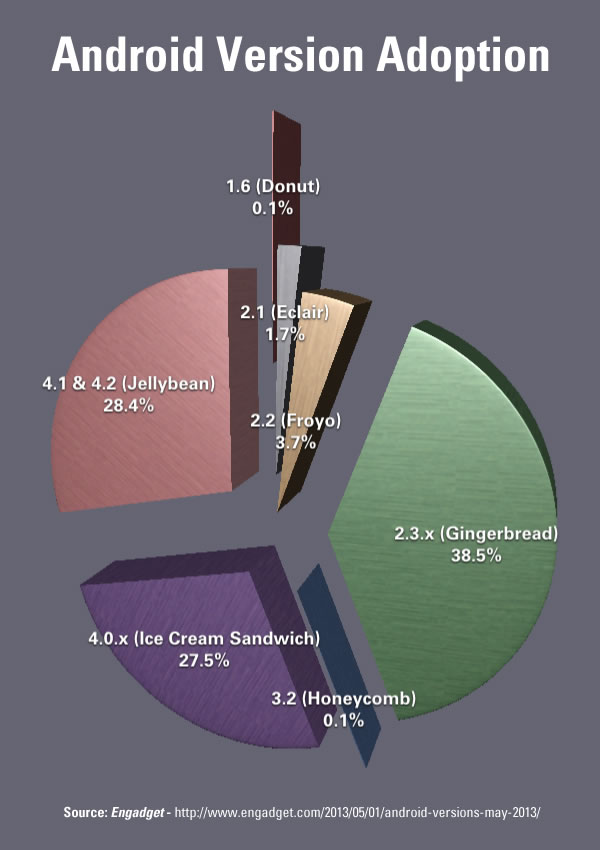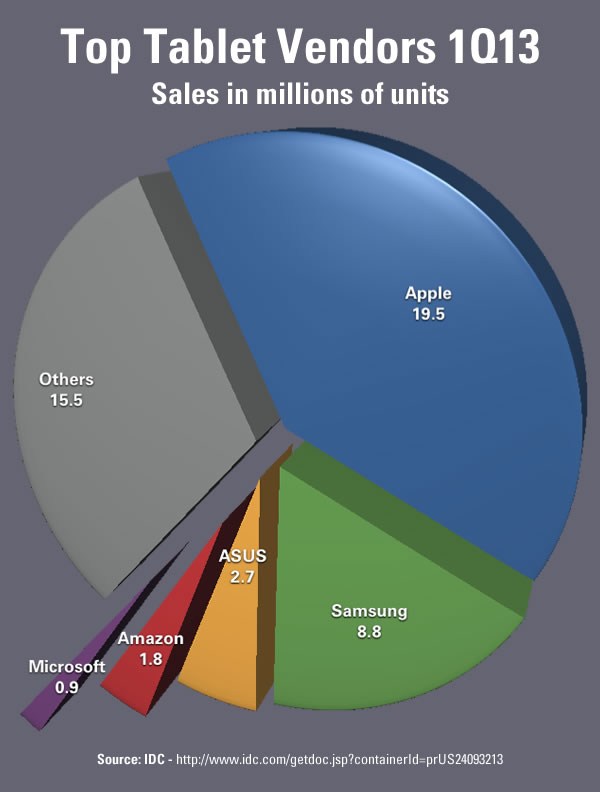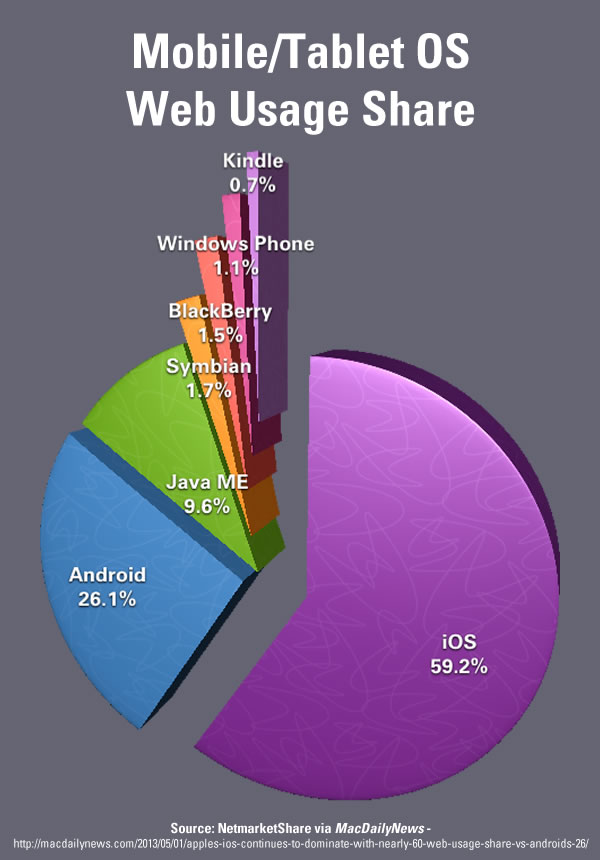Modern Android Takes Over
Click the graph to see the source article.
To the great annoyance of many a developer, Android 2.3 (a.k.a. “Gingerbread”), which was originally released at the end of 2010, has been the most common version of Android in the wild. Even until late last year, the general word was that accounted for half of all Android operating systems in the market.
Here’s some good news: according to Engadget, who are going by Google’s cleaned-up metrics (which are supposed to better reflect the number of active users), modern versions of Android — that is, 4.0 and higher (“Ice Cream Sandwich” and “Jellybean”) — now account for more than half the active Android installations. I think it’s safe to say that this is being driven by big sellers like the Samsung Galaxy S3 and Galaxy Note II, and should continue with the release of the S4 and HTC One.
Who Sold How Many Tablets in 1Q13?
Click the graph to see the source article.
IDC’s report on the worldwide tablet market for the first quarter of 2013 came out yesterday, and I’ve turned their numbers into the chart above. Some numbers of note:
- Total tablet shipments for 1Q13 were 49.2 million units — that’s more than were shipped in the first half of 2012.
- The year-over-year growth in tablet shipments in 1Q13 is a healthy 142%.
- Apple’s performance — selling 19.5 tablets in 1Q13 — outperformed IDC’s projected 18.7 million.
- ASUS is now the third biggest seller of tablets, thanks to its Nexus 7 tablet.
- The combined sales of Surface RT and Surface Pro tablets make up 900,000 units in 1Q13.
iOS Users Still Way More Active
Click the graph to see the source article.
You’ve probably seen a couple of articles on how iOS users account for more online activity than Android users even though there are more Android units out there, such as GoGo: in-flight Internet use 84 percent iOS, 16 Android and Time’s iOS vs. Android article. Here’s another data point: NetMarketShare’s latest web usage share data for various mobile operating systems, which shows iOS accounting for nearly 60% of web usage, more than double Android’s share.













 If you’re curious about Ember.js, here are some resources to get you started:
If you’re curious about Ember.js, here are some resources to get you started:



